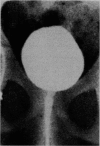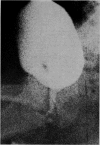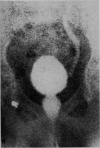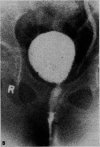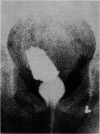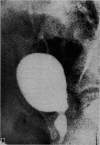Abstract
Most of the recent investigations of the lower urinary tract have been concentrated on the ureterovesical junction. Studies of 120 children examined by the method of voiding cinecystography and urethrography revealed that vesicoureteral reflux occurred in 22 cases without evidence of a lesion of the urethra, and in six children secondary to lesions of the urethra. Thirteen of the children studied had isolated lesions of the urethra. Urethral lesions encountered in this series of children included stenosis of the external meatus (14 cases), urethral valve (one case), urethral polyp (one case) and urethral stricture (two cases). The main advantages of cinefluorography and television control in this field lie in the fact that all phases of the voiding act can be observed and, when necessary, recorded on a movie film. Motion picture films provide visual evidence of the value of the method.
Full text
PDF




Images in this article
Selected References
These references are in PubMed. This may not be the complete list of references from this article.
- BENJAMIN J. A. The use of x-ray cinematography in urological studies. J Urol. 1959 Jan;81(1):227–231. doi: 10.1016/S0022-5347(17)65997-4. [DOI] [PubMed] [Google Scholar]
- DUNBAR J. S., GOLDBLOOM R. B., POLLOCK V., RADFORD R. An automatic device for voiding urethrography in infants and small children. Radiology. 1961 Mar;76:467–471. doi: 10.1148/76.3.467. [DOI] [PubMed] [Google Scholar]
- HANLEY H. G. Cineradiography of the urinary tract. Br Med J. 1955 Jul 2;2(4930):22–23. doi: 10.1136/bmj.2.4930.22. [DOI] [PMC free article] [PubMed] [Google Scholar]
- HUTCH J. A. Theory of maturation of the intravesical ureter. J Urol. 1961 Nov;86:534–538. doi: 10.1016/S0022-5347(17)65215-7. [DOI] [PubMed] [Google Scholar]




